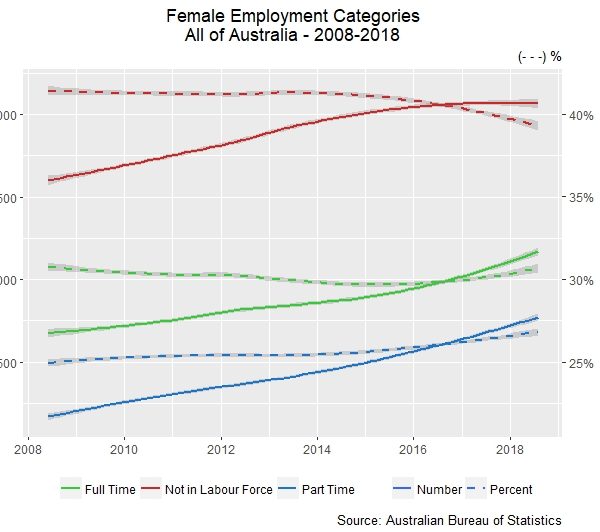WGEA releases important data on gender pay gap
A recent report released by the Workplace Gender Equality Agency (WGEA) points to both improvements and challenges in reducing the gender pay gap and the working arrangements for women; pertinent findings for the early childhood education and care (ECEC) sector workforce, where 94 per cent of the workforce are female.
This year has seen the biggest reduction in the gender pay gap year-on-year but men still earn an average of 21.3 per cent more than women, new data from the Workplace Gender Equality Agency (WGEA) has shown.
The data shows that over the last five years, employer action is improving workplace gender equality. The WGEA data records a steady increase in the number of women in management roles and strong growth in employer action in areas such as overall gender equality policies and strategies, pay equity and flexible work.
The gender pay gap has declined every year and this year has seen the biggest single-year drop (down 1.1pp) in the average full-time total remuneration gender pay gap.
However, the data confirms that there is still a long way to go. There are pay gaps favouring men in every industry and occupation and women earn, on average, just 79 per cent of men’s full-time total remuneration salaries.
The five-year data trends also show virtually no movement in gender segregation across Australian industries and little improvement in either access to paid parental leave or the representation of women at CEO level or on boards.
WGEA Director Libby Lyons said the Agency’s dataset shows that employer action has delivered real outcomes but that women still face considerable barriers in Australia’s workplaces.
“The five years of data collection demonstrates the value of measuring workplace gender equality. We have clear evidence that employer action delivers real results and we should recognise the great work many employers have done in addressing issues such as pay equity. As employers have taken action, the gender pay gap has declined and gender equality outcomes for women and men across Australia have improved.
“Although the gender pay gap has narrowed every year, progress is too slow. Access to parental leave has not improved, with the provision of paid primary carer’s leave actually going backwards.”
“However, our data also highlights areas for improvement. Although the gender pay gap has narrowed every year, progress is too slow. Access to parental leave has not improved, with the provision of paid primary carer’s leave actually going backwards.
“The first five years of data shows where we are seeing positive change and where we need to make more effort. We now need even more employers to take action so that we can accelerate the momentum for gender equality in Australian workplaces,” said Ms Lyons.
The Australian Government will provide $8 million for the WGEA to upgrade its reporting and data management system to improve reporting on Australia’s workplace gender equality. The upgrade will enable WGEA to better sort and analyse the data collected, allow for the submission of voluntary additional data, streamline the reporting process, and reduce the time and cost to business of reporting to WGEA.
The upgraded system will enable public sector employers to voluntarily report on their pay gaps for the first time, potentially increasing the size of WGEA’s dataset to approximately 75 per cent of Australian employees, from the current 40 per cent.
Popular

Practice
Provider
Quality
Research
Workforce
New activity booklet supports everyday conversations to keep children safe
2025-07-10 09:00:16
by Fiona Alston

Quality
Practice
Provider
Workforce
Reclaiming Joy: Why connection, curiosity and care still matter in early childhood education
2025-07-09 10:00:07
by Fiona Alston

Policy
Practice
Provider
Quality
Research
Workforce
Beyond the headlines: celebrating educators and the power of positive relationships in early learning
2025-07-07 10:00:24
by Fiona Alston













